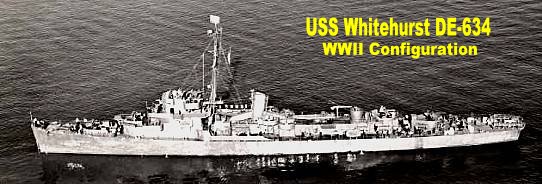
|
Lt. James K. Nance's Memories of the Kamikaze Attack |
|
This is an excerpt from a longer history of Mr. Nance's experience during WWII. Click here for: Nance's History |
|
|
|
Lt. James K. Nance |
|
Tokyo Rose had warned us the night before that there would be an all-out air attack by the "Heavenly Winds." Admiral Turner (in charge of the invasion) sent out a dispatch warning every one to be especially alert, as his intelligence reports indicated that the Japanese were coming down from the island of Kyushu in an unprecedented raid. All knew what they were talking about, because on April 12, 1945, the suiciders came howling down with death in their hearts. About 2:30 P.M. I was writing a letter to my wife Kathryn in my stateroom when the general alarm sounded and we all dashed to our battle stations. We spotted five Jap dive bombers - recognized as "Vals" (we could see their non-retractable wheels) approaching from the west. (I was at my damage-control station amidships - inside the hull - and the Captain's talker relayed to us all the reports on the enemy.) Three of the planes peeled off the formation and proceeded to maneuver into position to attack us. One approached from our port side first and our five port-side 20 mm. machine guns and our 1.1 quad. and our 3"/50-caliber main batteries began pouring out a barrage of anti-aircraft fire. While this was happening, the other two Jap suiciders came in from our starboard side and we had only five 20-mm. anti-aircraft guns to combat that secondary attack. (Actually our Captain and our Gunnery Officer never saw the two Jap planes approaching on our starboard side, as they were observing the fire of our main batteries at the port-side attacker.) Strangely enough, our five 20-mm. machine guns on the starboard side succeeded in "splashing" the two Jap planes about 200 yards away from our ship, whereas all that the main battery and the other machine guns on the port side could do was to set that attacker on fire. The port-side Kamikaze hit us in the superstructure exactly where our combat information center is located, killing instantly all men stationed there, plus all men in the pilot house just forward of CIC. There was a terrific gasoline explosion which was followed by a huge fire, engulfing the entire superstructure. Gasoline poured down into the radio room below CIC. and killed or seriously injured all men there. The plane was carrying a 500-pound delayed action bomb, which carried on through the hull and exploded on the starboard side about fifty feet away from the side of the ship. Fragments of the bomb killed or seriously injured every man on the forward guns - about thirty in all. I rushed to the scene of the fire with my fire-fighting party and in about ten minutes we had the blaze under control, though we spent over an hour putting out small fires that kept breaking out in compartments below. I had never seen the horror of death at close hand. One minute we were a crew of 189 men. The next minute, 42 were killed or missing in action and over 40 were seriously burned or injured. My roommate, Lieutenant Robert J. Purtell, Brooklyn, New York, serving as Communication Officer on Board ship, was killed in CIC. My best friend, Lieutenant (jg.) Norman J Duncan, and my good friend and Executive Officer, Lieutenant Yates Bullock, of Rocky Mount, North Carolina, were missing in action and have not been heard of since. We had no doctor aboard, and the chief pharmacist's mate was severely burned and out of action, and that left a pharmacist's mate third class as the lone medical corps representative aboard. What a marvelous job he did, assisted by various members of the crew, in taking care of men who had sever abdominal wounds or who had lost arms and/or legs, etc.! It took some quick and skillful first-aid to save their lives. Several ships dashed over to lend assistance later on, but we managed to creep into Kerama Retto, in "graveyard row," under our own power. By "graveyard row" is meant that there were about twenty destroyer-type vessels which had been put out of the operation by virtue of suicide hits and had been towed in or had come in under their own power for temporary repairs before they could proceed to rear areas to get permanent repairs. Again, over twenty of our vessels had been successfully attacked by the Kamikaze, but on the other hand it is estimated that we had taken care dozens of the enemy suicide bombers.
|
WWII
Era | Korea War &
'50s | Viet Nam & 60s |
Reunions |
All Links Page
Search & Rescue
Memorial | Poetry | Enemy Below | Taps List | Photos/Armament | History | Crews Index | Home
